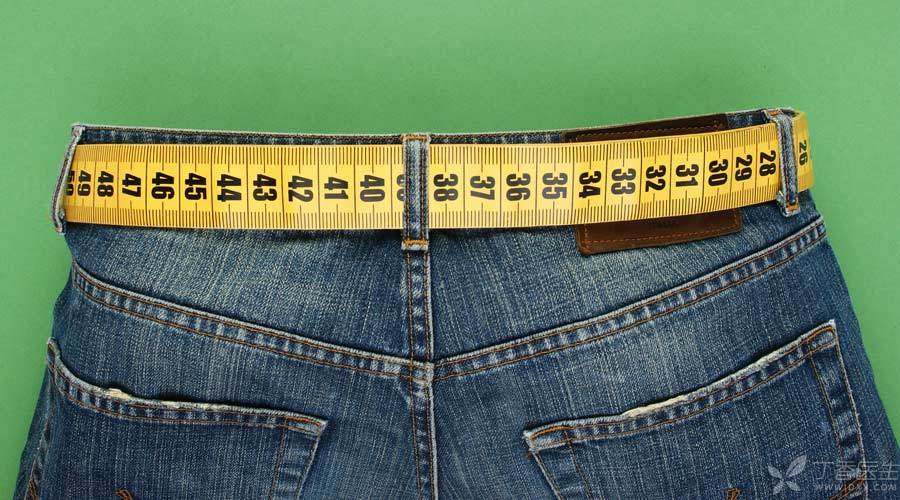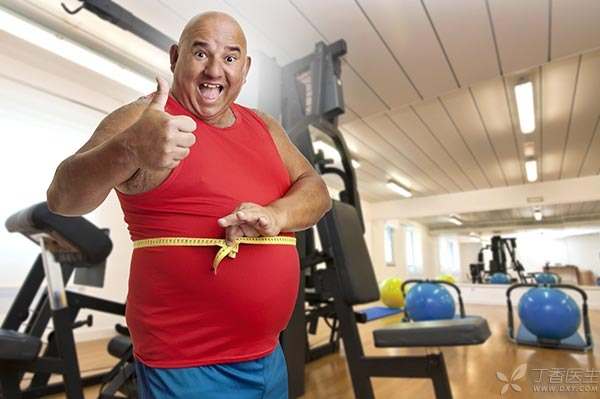
First of all, it should be clear that the obesity mentioned here refers specifically to the body mass index BMI > 24 kg/m2.
The risk of diabetes in obese people is significantly higher than that in healthy people. More than 80% of type 2 diabetes is related to obesity. The risk of diabetes in light, moderate and severe obesity is 2 times, 5 times and 10 times that in normal weight people respectively.
Objectives of Diabetic Patients to Loss Weight
Although everyone knows that losing weight means eating less and exercising more, specifically speaking, there are still many detailed goals to reduce the occurrence of hypoglycemia in the process of losing weight and hope everyone can lose weight safely.
Additional attention should be paid to the following points:
1. Weight loss target: within 3 ~ 6 months, lose 5% ~ 10% of body weight, and the speed should not be too fast;
2. Diet principle: According to diabetes drink with the food of each meal, the main meal is fixed and fixed regularly, and no snacks are eaten;
3. Diet pattern: Under the guidance of professional nutritionists, choose suitable Mediterranean diet, vegetarian diet, low carbohydrate diet, low fat and low energy diet, high protein diet, etc., and monitor the changes of blood lipid, liver and kidney function at the same time;
4. Drug selection: Metformin and acarbose, two oral hypoglycemic drugs with weight reduction effect, are preferred.
5. Self-test blood sugar: Monitor blood sugar on an empty stomach and 2 hours after three meals to understand the influence of diet amount and type on blood sugar, so as to adjust diet style.
How should the fat of diabetic patients be reduced?
Step 1: Diet
Please remember six words at the core: timing, quantification and optimization.
(1) Timing: The main meal is scheduled and no snacks are eaten.
When the total energy intake is low every day, eating what every day has little effect on weight and health. However, when the total energy intake exceeds the standard every day, the eating time has an impact on health and weight-people who eat during the day are lighter and healthier than those who eat at night, and people who eat regularly and do not eat snacks are lighter and healthier than those who eat all the time.
That is to say, for those who want to lose weight, on the premise of eating more healthy food, try to control the time of three meals a day is relatively fixed, and do not eat nuts, yogurt and other snacks between meals.
(2) Quantitative: Control the total amount of energy consumed in food
Specifically:
1) Calculate the standard weight = your height (cm)-105;
2) The average office worker multiplies this result by 25 ~ 30, because he is overweight and needs to eat less, so we multiply it by 25, which is the total amount of calories needed for a day.
For example, if a person is overweight and 170 cm tall, the total energy he should consume every day = (170-105) × 25 = 1625 Kcal. All food needs to be strictly controlled.
(3) Optimal selection: preferentially select healthy foods with high nutrient density and low energy density
For example, fresh vegetables and fruits. It is worth reminding that those vegetables that contain starch, such as potatoes, sweet potatoes and corn, can be eaten, but the amount must be controlled, and after eating these meals, you must eat less or no, that is, vegetables should be eaten as meals. The second is fruits, which should not exceed the size of a fist a day.
If you occasionally go out to socialize or indulge on weekends and eat too much or junk food in one meal, you need not eat or only eat vegetables and fruits in the next meal or several meals, so that the metabolic system in the body can regain its steady state and there is no need to feel too guilty.

2. Campaign
There are many ways to exercise, hoping to find the most suitable exercise and the most reasonable way to match.
At present, the recommended reasonable exercise arrangements are as follows:
(1) Daily activities: Try to have as many activities as possible on weekdays, including walking, climbing stairs, pacing, doing housework, etc.
Objective: Stretch or walk every 1 hour, go up the stairs without taking the elevator, walk back and forth when answering the phone, walk to eat without ordering takeout, etc.
Function: Consumes more energy in daily life to help blood sugar reach the standard.
(2) Aerobic exercise: fast walking, jogging, swimming, dancing, aerobics, gymnastics, cycling, ball games, etc.;
Objective: At least 5 days a week, at least 30 minutes of aerobic exercise every day, preferably for 1 hour. If there is no basis for exercise, it can start with 5-10 minutes a day, 5 days a week, or break down the daily exercise amount into 3 times a day, each time for 10-20 minutes.
Functions: Improve heart and lung function, promote blood circulation, improve immunity, relieve pressure, improve sleep quality, help maintain normal blood sugar, blood pressure and blood lipid, and reduce the risk of type 2 diabetes and cardiovascular diseases.
(3) Impedance exercise: weightlifting, aerobic exercise using elastic ropes, dumbbells, etc., fitness equipment using gymnasiums, squats, push-ups, flat supports, etc.;
Target: About twice a week;
Function: Strengthen bones and muscles and improve basal metabolic rate, that is, the calories that each of us will consume if we sit there and do not move.
(4) Flexibility training: stretching, yoga, etc.
Objective: Flexibility training is carried out for 5 ~ 10 minutes before and after each aerobic exercise and impedance exercise, which can also be interspersed with daily activities.
Function: Improve body flexibility and coordination, reduce the probability of falls and sprains.
3. Special reminders for sports precautions
(1) Overweight and obese patients should avoid climbing stairs and mountains as much as possible to reduce knee joint wear. Walking on flat ground is the best, or swimming can be chosen if conditions permit;
(2) In order to avoid the occurrence of hypoglycemia, diabetics should choose carbohydrate foods for extra meals before exercise. Carbohydrate foods should be carried with them during exercise. Patients using acarbose should carry glucose with them.
(3) Blood sugar monitoring should be carried out before and after exercise;
(4) Fasting blood glucose > 16.7 mmol/L, and exercise is forbidden when repeated hypoglycemia or large blood glucose fluctuation.
(5) Consult a doctor before exercise to evaluate cardiopulmonary function and motor function.
4. Surgery
If through diet, exercise weight loss is ineffective patients, can consider through weight loss surgery to help lose weight. However, after all, it is surgery, or there are trauma and risks, so what kind of people can do surgery, there are strict requirements. Click to view > > Surgery can cure diabetes?
